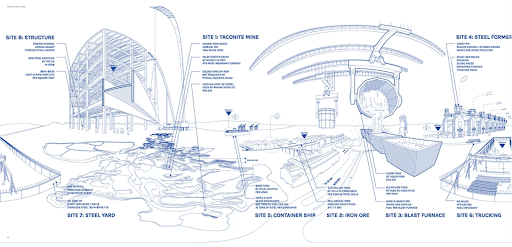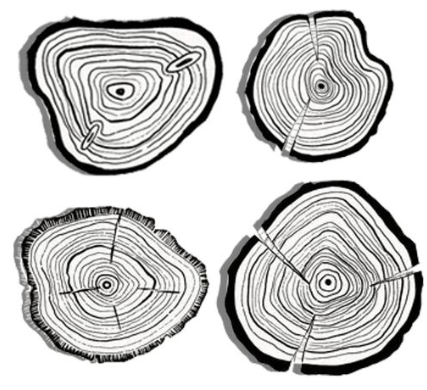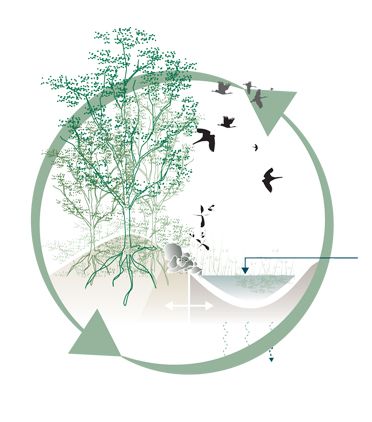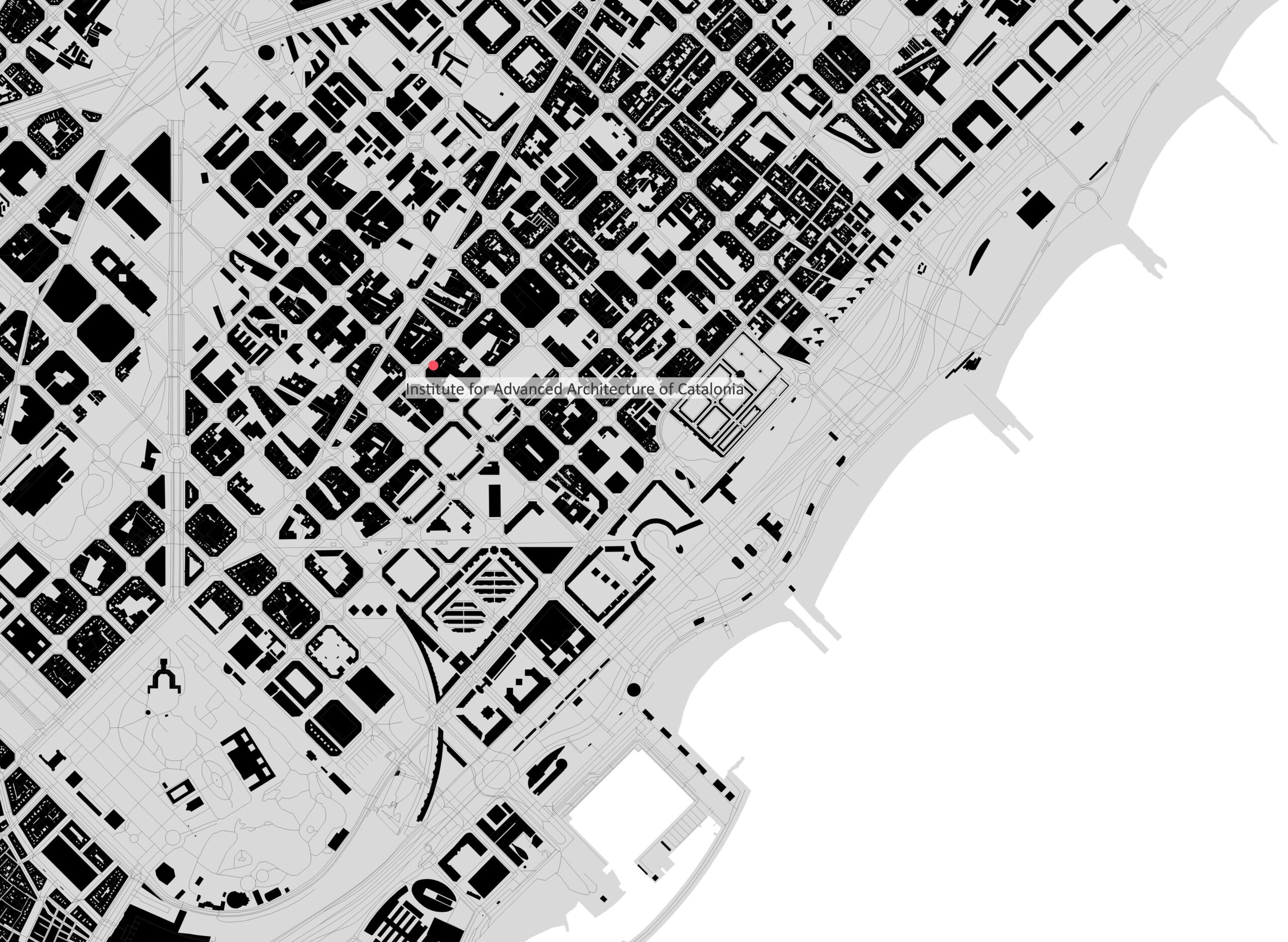Designing Circularity in the Built Environment
Syllabus
Photo credit: Material Stories: Steel, Embodied Energy and Design, D.Benjamin. Columbia University GSAPP
Description
Cities are our future. They are the drivers of the global economy, centres of creativity, diversity, and interaction – and they are home to the majority of the global population. Cities cover only 3% of the earth’s surface, yet they consume 75% of global natural resources, making them effective places to address critical environmental and social challenges. A large part of the environmental impact of cities can be attributed to the Built Environment. Roughly 40% of all carbon emissions are related to this part of our economy. 10% can be attributed to embodied carbon, where 30% can be attributed to energy consumption.
Growing urban regions and consumption patterns combined with an extractive and wasteful economy create many adverse environmental impacts both inside and outside of our human habitats. Our linear economy is at the root of these challenges: core to this economic model is a fundamental disconnect between how we live our lives and do business, and what this means for the natural ecosystems that allow us to live happy, healthy sustainable lives.
In 2004 it was estimated that at the current rate of mining, we are left with 32 years of copper, 23 years of tin, and 21 years of lead (C.O’Donnell, D.Pranger). With the raw materials becoming scarce, in the near future, recycling and reusing will become an inevitable part of how architects, designers and engineers construct the built environment.
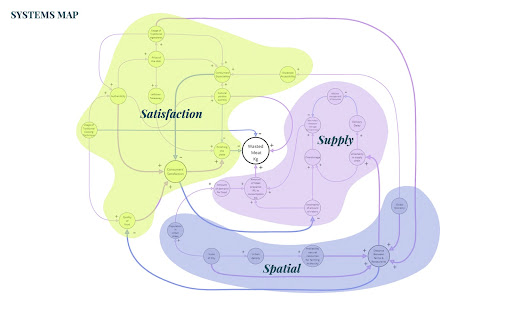
Phote Credit: From Diversity to Sustainability by J.B.Saleh, Y.Wu, A.Najera, X.Can. IAAC 2022/23
Mapping Circularity of the Built Environment Seminar focuses on two types of analysis needed to tackle these environmental challenges. At the first stage, it focuses on the creation of a Systems Map. This system map helps to identify root causes and leverage points for change on the basis of more intangible forces which steer our societies. Students will dive into several frameworks, tools, and methodologies which help transform operations and drive long-term, meaningful sustainability progress and avoid unintended consequences and burden shifting. An example is the ‘7 Pillars of the Circular Economy’ framework by Metabolic, used by companies and cities globally. It will be used as a holistic framework to assess trade-offs and understand the net positive impact of the design decisions and solutions.
Secondly, students will map the materials and their respected embodied carbon coming in and out of a chosen case study. By analysing the process that construction materials go through, from the extraction of the raw materials, transportation, manufacturing, and assembling, to the end of life scenarios, and understanding the potential ways of shifting this linear thinking towards more circular approach, will highlight the global impact of the case studies in relation to the CO2 emissions and the environmental footprint.
Learning Objectives
At course completion the student will:
- Be familiar with the principles of systems thinking and impact assessments to identify root causes and leverage points in achieving progress towards a sustainable change;
- Understand the basics of the circular economy as it relates to the urban context and the built environment, including potential applications and their limitations;
- Be able to map the material flows and their embodied carbon through the lifecycle;
- Be familiar of the environmental impact caused by analysed materials and how to design for reducing it;
- Be able to bring these tools into practice and assess how the individual master thesis project addresses the issues that need to be solved, identify systemic barriers to implementation and propose solutions that can help overcome them.
Faculty
Projects from this course
LIFECYCLE OF WOOD
Deconstruction involves the systematic dismantling of buildings to recover valuable materials such as wood, metal, glass, and concrete. This approach prioritizes the preservation of materials for reuse, recycling, or upcycling, diverting a substantial amount of waste from landfills. The extracted materials form the basis of material banks, which act as repositories for salvaged construction elements. … Read more
Drivers of Construction and Deconstruction in Barcelona
2023: Barcelona is navigating a dynamic landscape of construction and deconstruction, thus enhancing its appeal as a global tourist destination, provide quality educational opportunities, and create diverse job prospects. The city’s commitment to sustainability and the careful management of its growth underscore its dedication to fostering a harmonious relationship between development and heritage preservation. 2030: … Read more
Bricks | Circular Matter
Some of the Circular Matter course’s main objectives were for the students to understand the basics of the circular economy and to be able to map the material flows and their embodied carbon through the lifecycle while also being familiar of the environmental impact caused by our specified analyzed materials. Bricks were our chosen material … Read more
STEEL CIRCULARITY
Shining Rebirth
Shining Rebirth is a project about the circular lives of float glass, aluminium frame and polycarbonate roofing. Related materials are taken from IAAC atelier, with numbers, dimensions and conditions properly analysed. Carbon footprint as each stage of life is calculated, with deconstruction steps properly considered. In order to propose a new life for these materials, … Read more

